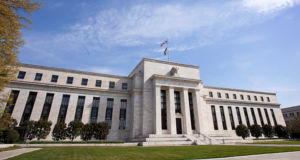 After a fairly data heavy week there still remains a great deal of uncertainty about certain parts of the global economy. Europe appears to be slowing in patches with France a particular concern, while the sharp slowdown in UK data has been put down to a slowdown in investment spending, as well as more general global uncertainty ahead of a forthcoming Brexit vote in June.
After a fairly data heavy week there still remains a great deal of uncertainty about certain parts of the global economy. Europe appears to be slowing in patches with France a particular concern, while the sharp slowdown in UK data has been put down to a slowdown in investment spending, as well as more general global uncertainty ahead of a forthcoming Brexit vote in June.
Even allowing for this week’s disappointing UK data the pound has rallied strongly for four days in succession, its best run of gains since June last year, and could be set for a run to the upside.
China’s growth story remains a concern with weak manufacturing and slowing services activity amidst concern that we might see further easing measures in the coming weeks.
This uncertainty has prompted a little bit of a pause in equity markets in the last day or so but we still look set for our third successive week of gains barring a surprise this afternoon with the US employment report.
There still remains much discussion about the resilience of the US economy; however recent data does appear to suggest that we are seeing a bit of a rebound in economic activity, albeit from a very low level.
Recently we’ve seen a slightly better than expected ISM manufacturing number, as well as a rebound in durable goods for January, and a slightly better Q4 GDP revision.
Last month the January non-farm payrolls came in much lower than expected at 151k, prompting some speculation that it was a bit of an outlier. There is certainly no question that the manufacturing sector in the US as well as globally is finding economic conditions difficult, and the broader worry is that this could prompt a similar slowdown on the services sector in the coming months.
This has certainly been true in China and to a lesser extent the UK, as well as France, though the reasons in France are probably more to do with last Novembers events in Paris.
Now there appears to be some evidence that we could be seeing a slowdown in the US services sector, despite two contrasting headline numbers from Markit and ISM yesterday. The Markit report saw a sharp drop back into contraction at 49.7, while the ISM report saw a minor slowdown from 53.5 to 53.4, which begs the question as to how two reports on the services sector can give two completely different outcomes?
On the employment components both reports were also ambiguous in that the ISM was poor, coming in at 49.7, while the Markit equivalent appeared to be more positive.
This ambiguity should make todays US employment report a more interesting affair given how poor the January number was relative to the latest readings from the ISM and Markit reports for February.
While the ADP employment report was fairly good, it was also pretty positive in January which would suggest perhaps that today’s non-farm payrolls report could well see an upward revision. We can also expect to see various monthly revisions for the whole of last year as well.
Expectations are for an improvement to 195k while the unemployment rate is expected to stay unchanged at 4.9%.
Last month we also saw a significant upward shift in average earnings for January by 0.5% and 2.5% on an annualised basis. This number is likely to have been skewed by a significant adjustment higher in the minimum wage levels across a number of US states, which could see the numbers slip back down for February, as this effect rolls off. The month on month number is expected to show a rise of 0.2%, while yesterday we saw a sharp downward revision in Q4 unit labour costs from 4.5% to 3.3%.
There has been some debate as to whether today’s number could shift the dial with respect to a March rate rise, but given recent volatility it’s safe to assume it probably won’t. Some might argue that a March rate hike remains on the table, but it isn’t really, especially since the ECB will probably ease monetary policy further next week. This would suggest that any Fed rate rise that might be on the table is more likely to stay there and gather dust.
EURUSD – slowly starting to squeeze higher edging above the 1.0900 area we have trend line resistance at 1.0930 from the February highs. The 200 day MA at 1.1050 remains the key resistance on the upside, while on the downside we have support at 1.0830.
GBPUSD – continues to edge higher after breaking above 1.4080 yesterday as the stabilisation process continues. This break could well see use head back towards 1.4220/30 area. The risk remains for a move towards the 2009 low at 1.3500, but for now that likelihood has diminished.
EURGBP – the sharp pullback from just below the 200 week MA at 0.7945 broke below the support at 0.7740 this week, and now has the potential to open up further losses towards 0.7520.
USDJPY – currently range bound between support at 110.00 and resistance at 114.90 we need to see a break one way or the other for clues as to the next move. With resistance at 114.80 we would need a technical break of 116.00 to argue a short term base is in place. While below 115.00 the risk is for a larger move lower to 106.00 in the longer term.
Source: CMCmarkets












